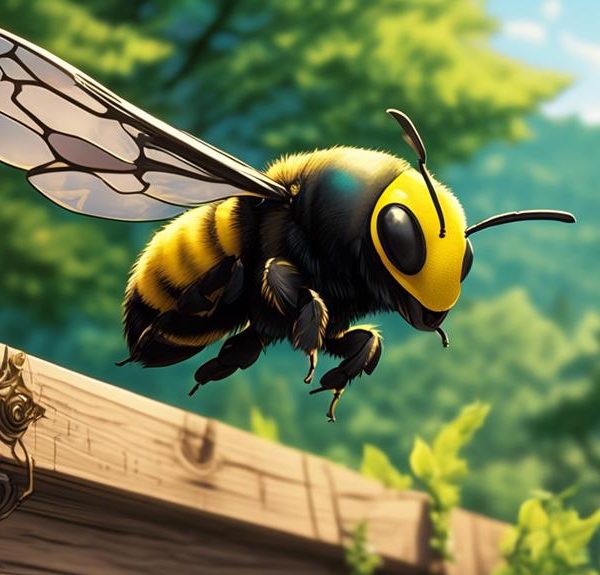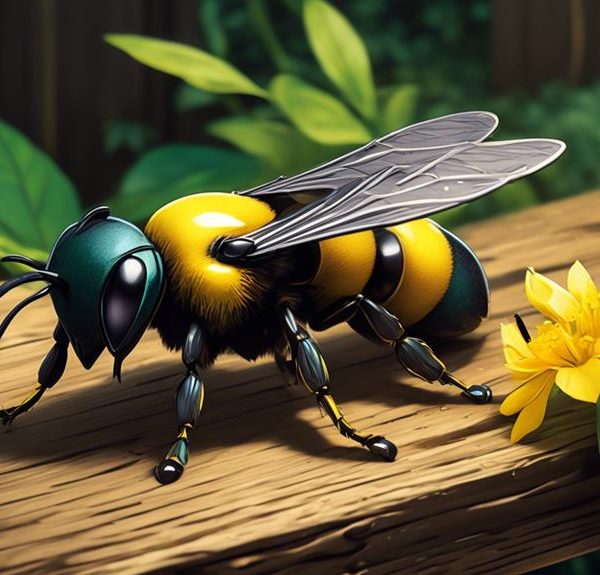Journey into the world of the Giant Blue Carpenter Bee, a striking Southeast Asian native now making its presence known on British shores.
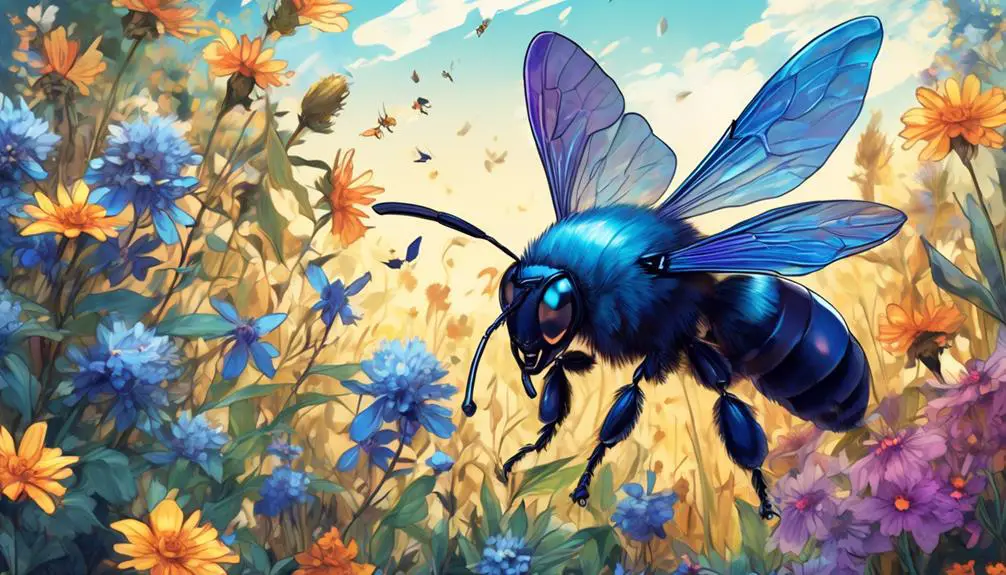
Giant Blue Carpenter Bee Uk
Did you know that despite their intimidating size, with some reaching up to 1.5 inches in length, the Giant Blue Carpenter Bees are harmless to humans?
You'd be intrigued to learn more about these fascinating creatures, especially since they're not commonly found in the UK.
These bees, known for their striking blue colour and large bodies, are typically native to Southeast Asia.
So, what brings these exotic insects to British shores?
We'll explore the reasons behind this intriguing migration, the impact it has on local ecosystems, and what their presence might indicate about the changing global climate.
Strap in, because we're about to take an exciting journey into the world of the Giant Blue Carpenter Bee.
Key Takeaways
- The Giant Blue Carpenter Bee is native to Southeast Asia, not the UK.
- It is known for its striking blue color and large body.
- It is a solitary creature that nests in dead wood or plant stems.
- It plays a crucial role in pollination and contributes to biodiversity.
Overview of the Blue Carpenter Bee
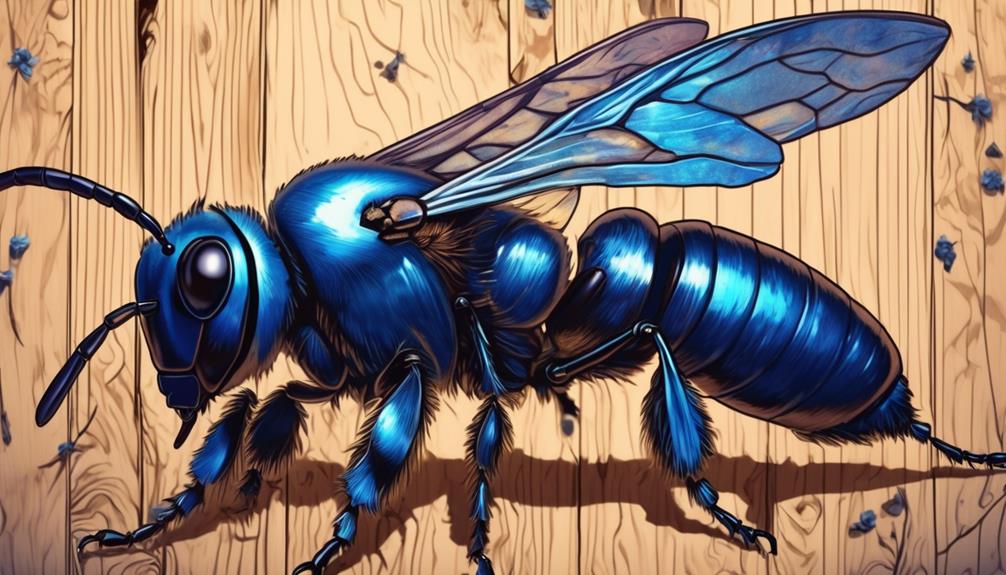
You'll find the Blue Carpenter Bee, a strikingly large and vibrant species, buzzing through the forests of the UK, exhibiting characteristics that set it apart from other bee species. These bees, known scientifically as Xylocopa violacea, are renowned for their size, with females reaching up to 28mm in length. Males tend to be slightly smaller but just as striking with their metallic blue-green bodies.
Unlike other bees, you'll notice that the Blue Carpenter Bee doesn't live in hives. Instead, they're solitary creatures, carving out their nests in dead wood or pithy plant stems, hence their name. They've a remarkable ability to chew through wood, using their strong jaws.
Another noteworthy characteristic of this species is their buzz-pollination. Unlike most bees, who gather pollen on their bodies and transport it to other flowers, Blue Carpenter Bees vibrate at a certain frequency to shake pollen loose from the flower. This trait not only makes them efficient pollinators but also vital contributors to the ecosystem.
In essence, the Blue Carpenter Bee's size, solitary nature, wood-boring habits, and unique pollination method set it apart in the bee world.
Physical Characteristics and Identification
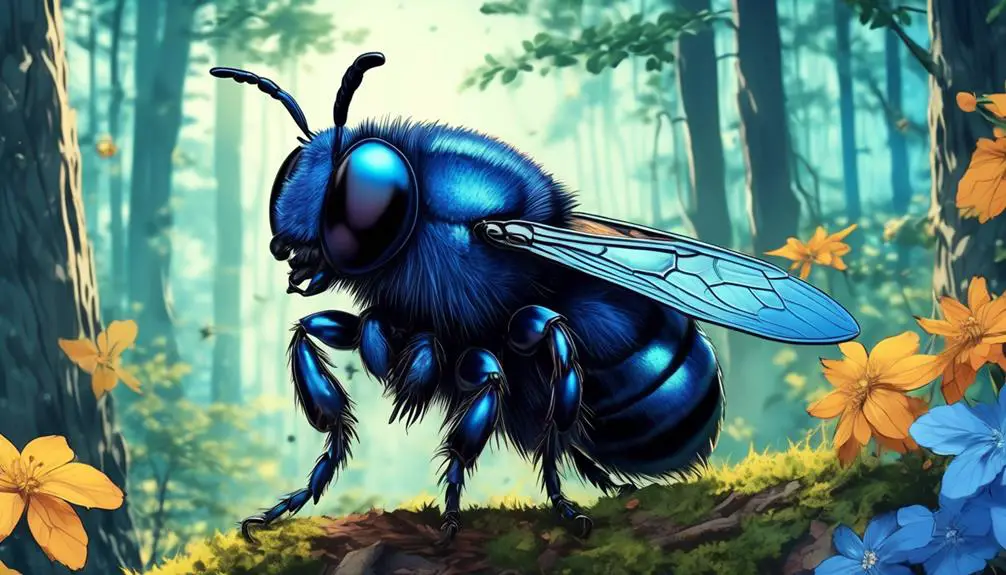
Having understood the general habits and lifestyle of the Blue Carpenter Bee, it's important to closely examine its physical features for accurate identification. A large species, it typically measures between 23 to 28mm in length. Its most striking feature, undoubtedly, is its vibrant metallic blue body, hence the name. This colouration isn't just for show – it's an adaptation to their environment, helping them blend in among the blue flowers where they often forage.
Take note of its dense, furry thorax and abdomen, an adaptation that helps it in colder climates. Its wings, a dark brown or black, often exhibit a blue or purple sheen under certain lighting conditions. Furthermore, it's essential to observe its strong mandibles. These aren't only used for feeding but also for burrowing into wood to make nests, hence their name 'carpenter'.
It's also necessary to note that the females are larger and more robust than the males. They also possess a stinger, while the males do not. This stinger, however, is only used for self-defence and not for aggression. These traits are key to distinguishing the Blue Carpenter Bee from other bee species.
Habitat and Geographical Distribution
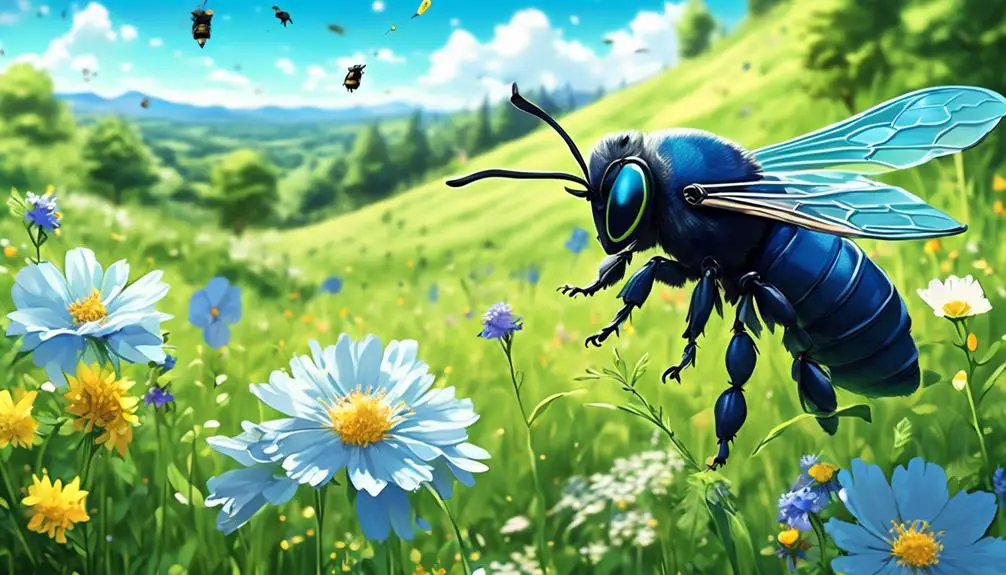
If you're keen on spotting the Blue Carpenter Bee, you'd better set your sights on Southeast Asia, as this is where the species predominantly thrives. This region's warm, tropical climate is ideal for these bees, allowing them to flourish in countries like India, China, Malaysia, and Indonesia. However, they're not exclusively found in Asia; they've also been spotted in northern Australia.
Their preferred habitat includes forests, gardens, and orchards where they can easily find wood for nesting and flowers for feeding. It's important to note that they're solitary creatures, each female establishing and working her nest alone.
Country | Habitat | Notes |
|---|---|---|
India | Forests, Gardens | Most Common |
China | Orchards, Forests | Less Common |
Malaysia | Gardens, Forests | Common |
Australia | Forests | Less Common |
As temperatures rise due to global warming, it's possible that their geographical range may expand. This, coupled with deforestation and changes in land use, could potentially see them establishing new habitats in areas previously unsuitable. Thus, conservation efforts are crucial to ensure the survival of this species.
Behaviour and Lifestyle
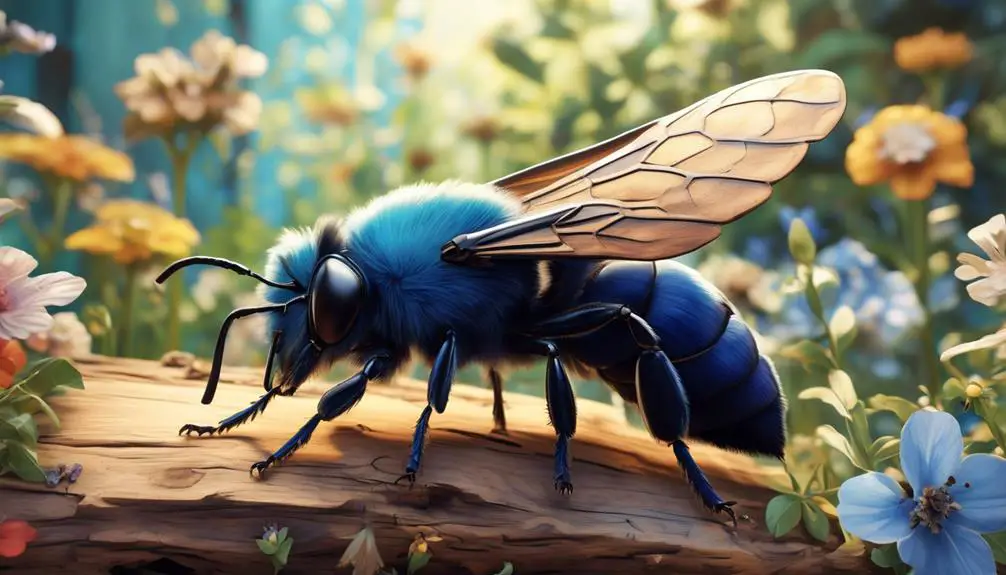
While their habitat and geographical distribution offer intriguing insights, the Blue Carpenter Bee's behaviour and lifestyle are equally fascinating, revealing a unique set of characteristics and survival tactics. These bees are solitary creatures, you won't find them living in hives like their honeybee counterparts. Instead, they choose to nest in dead wood or bamboo, carving out tunnels with their strong jaws, hence the name 'carpenter'.
The females are the constructors and protectors of these nests, while the males, distinguishable by their smaller size and brilliant blue hue, are primarily concerned with mating. Interestingly, unlike many other bee species, Blue Carpenter Bees don't produce honey, as their diet consists mainly of nectar and pollen from flowers.
One of their most captivating behaviours is the 'buzz pollination'. They vibrate their bodies at a high frequency which shakes the pollen loose from the flowers, aiding in pollination. This behaviour isn't only beneficial for their diet, but it also plays a crucial role in the pollination of plants, showcasing the symbiotic relationship between the Blue Carpenter Bees and the environment. This behaviour is a testament to their adaptability and survival in diverse habitats.
Environmental Impact and Conservation Efforts
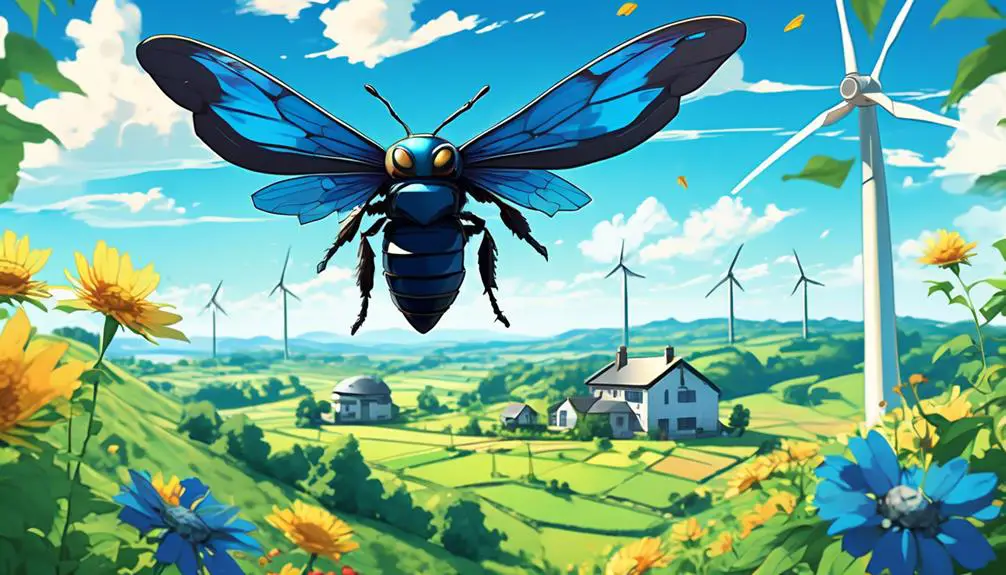
In light of their critical role in pollination, the environmental impact of Blue Carpenter Bees is profound, necessitating a closer look at conservation efforts aimed at preserving these unique creatures. They are essential in maintaining biodiversity, particularly in tropical environments. However, habitat destruction and climate change pose significant threats to their survival.
Let's consider the following information:
Threat | Conservation Effort |
|---|---|
Habitat Destruction | Implementing sustainable forestry practices |
Pesticide Exposure | Reducing pesticide use, promoting organic farming |
Climate Change | Advocating for climate change mitigation policies |
Invasive Species | Implementing invasive species control measures |
You'll notice that each threat corresponds to a specific conservation effort. Sustainable forestry practices, for instance, can mitigate habitat destruction. Similarly, reducing pesticide usage and promoting organic farming can minimise pesticide exposure. Advocacy for climate change mitigation policies can help address the impacts of climate change. Lastly, controlling invasive species can aid in preserving the bees' habitat.
In a nutshell, understanding these threats and the corresponding conservation efforts is crucial in preserving the Blue Carpenter Bees, hence the biodiversity of our ecosystems.
Conclusion
So, you've discovered the captivating world of the Giant Blue Carpenter Bee. With its distinct coloration and unique habits, it's a standout in the insect kingdom.
Despite its rarity in the UK, understanding its environmental impact and conservation is crucial.
Keep in mind, these bees aren't just remarkable creatures, they're also vital cogs in our ecosystem.
So, let's value and protect them, not just for their beauty, but for the important role they play in our world.

